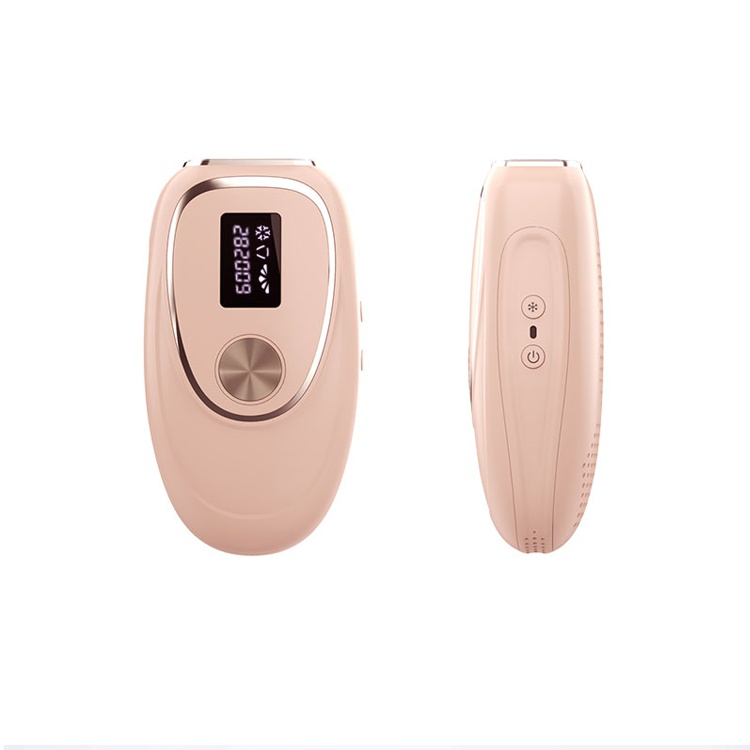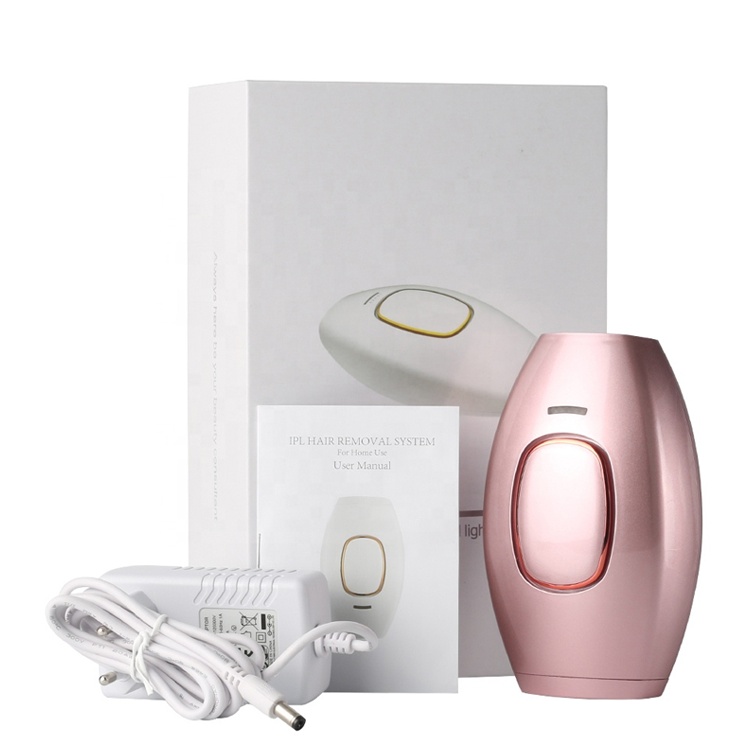How often can you use ice cool hair removal device?
Summary
Ice cool hair removal devices are advanced cosmetic tools designed to provide effective hair removal while enhancing user comfort through integrated cooling technology. Utilizing Intense Pulsed Light (IPL) therapy, these devices target hair follicles with pulses of light energy while simultaneously applying cooling mechanisms to minimize discomfort and protect the skin from thermal damage.
The notable blend of efficacy and comfort has made ice cool hair removal devices increasingly popular for individuals seeking both permanent hair reduction and a less painful experience compared to traditional methods. The operation of these devices relies on the absorption of light energy by the pigment in hair follicles, facilitating hair reduction. Cooling features maintain the skin at lower temperatures during treatment, which not only alleviates pain but also reduces the likelihood of side effects such as redness and swelling.
Users typically experience only mild sensations, making these devices particularly appealing for those with sensitive skin.
The popularity of ice cool technology in hair removal is evident, with many users reporting a comfortable experience and minimal downtime following treatments.
Recommended usage frequency is a critical aspect of maximizing the effectiveness of ice cool hair removal devices. Initially, users are advised to treat the area three times per week for the first month, subsequently reducing to two times per week in the following months. Maintenance sessions are generally suggested every four to six weeks thereafter.
Overuse of the device, however, can lead to skin irritation, emphasizing the importance of adhering to established guidelines for safe and effective treatment.
While ice cool hair removal devices offer significant advantages, potential controversies surrounding their use include the effectiveness of treatments over time and the need for ongoing maintenance due to hormonal changes affecting hair growth cycles.
Additionally, safety concerns, such as proper operational procedures and client education regarding potential side effects, are vital for ensuring both practitioner and client safety.
How Ice Cool Hair Removal Devices Work
Ice cool hair removal devices utilize advanced technology to enhance the effectiveness and comfort of hair removal procedures. These devices primarily employ Intense Pulsed Light (IPL) technology combined with cooling features to target hair follicles while minimizing discomfort and skin irritation.
Mechanism of Action
The core function of ice cool hair removal devices is to deliver pulses of light energy that are absorbed by the pigment in hair follicles, leading to hair reduction. The unique red-light IPL technology operates within the wavelength range of 600-1200 nm, effectively penetrating the skin to reach deeper hair follicles. The incorporation of cooling technology is critical, as it helps to lower the skin temperature significantly—sometimes to as low as 5°C (41°F). This rapid cooling protects the skin from potential thermal damage, allowing users to experience only a mild zapping sensation during treatment rather than discomfort.
Cooling Mechanism
Ice cool hair removal devices feature built-in cooling systems that maintain a constant soothing skin temperature. For instance, Ulike’s advanced cooling technology maintains a temperature of around 65°F (approximately 18°C) during use. The cooling plates designed into these devices can help keep the skin at a comfortable temperature range of 5°C–9°C. This mechanism is not only effective in preventing redness and swelling but also allows for a more comfortable hair removal experience overall.
Advantages of Ice Cool Technology
The primary advantages of ice cool technology in hair removal devices include:
- Enhanced Comfort: The cooling effect minimizes discomfort and reduces the likelihood of skin irritation, making the treatment process more pleasant for users.
- Reduced Downtime: Many users report that the cooling mechanism allows them to return to their daily activities immediately after treatment, unlike more traditional hair removal methods that may require recovery time.
- Suitable for Sensitive Skin: The technology is particularly beneficial for individuals with sensitive skin types, as it helps to mitigate common side effects such as redness and irritation.
Recommended Usage Frequency
The frequency of using ice cool hair removal devices is crucial for achieving effective results while minimizing potential side effects. In the initial phase, it is recommended to start using the device three times per week for the first month. This schedule allows the skin to acclimate to the treatment while providing adequate opportunities for hair removal during its active growth phase, as hair grows in cycles. For the second and third months, usage should be reduced to two times per week. After this initial three-month period, maintenance treatments can be adjusted to once every four to six weeks, depending on individual hair growth patterns and the specific recommendations from the practitioner. It is important to note that using the device more frequently than recommended—such as every two weeks—may lead to skin irritation or other adverse reactions, and should be avoided. Following the suggested timeline helps ensure that treatment is both safe and effective, allowing for optimal results over time. Additionally, patients should be aware that hair removal is not a permanent solution, and ongoing maintenance treatments may be necessary to sustain desired results due to hormonal changes or the presence of hair in different growth phases. Thus, adhering to the recommended treatment schedule is essential for effective and safe hair removal using ice cool devices.
Safety Considerations
When using an ice cool hair removal device, it is crucial to adhere to strict safety measures to minimize risks and ensure effective treatment. The following guidelines outline the necessary precautions for both operators and clients.
Operational Safety
Devices must be equipped with audible and visible activation warning systems to indicate when the laser is in operation or being tested. A master switch should be in place to control patient exposure, and secure storage must be provided to prevent unauthorized use when the device is not in operation. A clearly marked laser warning sign should be posted at the entryway to the laser-controlled area.
Emergency Protocols
A Class 4 laser controlled area requires several additional safety features, including a "Stop" button to quickly deactivate the laser during emergencies and area safety controls that facilitate rapid exit and entry under crisis conditions. Proper barriers or screens should be utilized to attenuate laser radiation at entry points, ensuring further safety measures are implemented to prevent the spread of infection through standard cleaning and disinfection procedures.
Protective Equipment
All authorized personnel must wear appropriate eye protection, such as goggles or face shields, when entering areas where laser exposure may occur. Eyewear is particularly essential, as studies indicate that 70% of laser eye accidents are linked to improper use or absence of protective eyewear. Additionally, fire safety equipment must be readily accessible, especially considering the potential flammability of materials near the laser operation area.
Client Safety and Education
Client assessment is an integral part of safety protocols. Factors such as skin type, hair color, thickness, medical history, and previous hair removal methods must be considered prior to treatment. Educating clients about potential side effects, including temporary redness, swelling, and in rare cases, blistering or scarring, is essential for informed consent and to set realistic expectations.
Aftercare Instructions
Post-treatment care is critical for minimizing side effects and promoting healing. Clients should be advised to avoid sun exposure, use broad-spectrum sunscreen, and refrain from hot showers or strenuous activities for 24-48 hours after treatment. Recommendations for managing mild side effects, such as applying ice or cold compresses, and using gentle moisturizers, can enhance recovery and reduce discomfort.
Regulatory Compliance
In addition to operational and procedural controls, compliance with regional regulations regarding laser safety is mandatory. For example, the Ministry of Labour in Ontario endorses the ANSI Z136 standards for workplace safety related to laser use. By following these regulations, facilities can ensure a safer environment for both clients and practitioners.
 English
English Español
Español Português
Português Pусский
Pусский Français
Français Deutsch
Deutsch 日本語
日本語 한국어
한국어 Italiano
Italiano عربى
عربى

